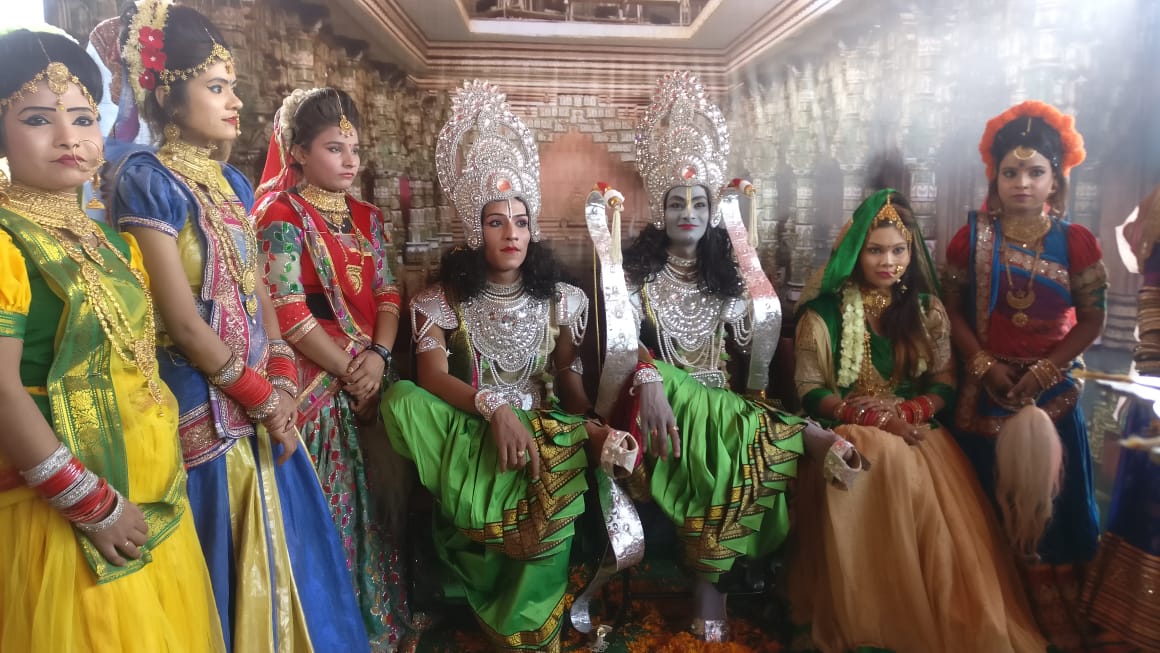This year, all over India, Dussehra was celebrated on the tenth day of the month of Ashvin according to the Hindu Luni-Solar calendar. The day comes at the end of Sharadiya Navratri or the day following Mahanavami. Celebrated by Hindus across the world, especially in India and Sri Lanka, Navratri is one of their most important festivals.
Because of the geographical proximity, cultural similarities and economic interdependence, India and its southern neighbour Sri Lanka have always been each other’s topmost priorities. Originating in India, Hinduism and Buddhism have historically been the binding feature for both neighbouring states. The epic Ramayana, defines the tale of Lord Rama, the seventh avatar of God Vishnu. Dussehra is celebrated as Lord Rama’s victory over King Ravana The ancient historical epic, Ramayana written several thousand years ago relates the story of Lankeshwara. King Ravana is involved in a battle with Lord Rama, after his wife Sita was kidnapped and taken to Sri Lanka.
CELEBRATION OF SPIRITUAL BONDING: NAVARATRI AND DUSSEHRA
Sri Lanka and India’s historic relations have been built on shared religious, cultural and linguistic interactions. “Navaratri”, celebrated every year in the autumn means “nine auspicious nights”. Celebrations are held in honour of the Hindu Goddesses Durga, Lakshmi and Saraswati. Every festival has a legend or a myth surrounding it and Navaratri and Dussehra are no exception. In India, the Hindus celebrate Dussehra with great enthusiasm and with endurance. In Indian states the celebration is mainly related to Lord Rama, the incarnation of Vishnu, the God of Protection. The Navaratri festival signifies the process of victory which lies in the progressive behavioural change from evil qualities to noble merits.
In Sri Lanka, which is home to many Hindu shrines, the Navaratri festival is celebrated with utmost devotion and this is a time of great joy for the Hindu community. The Navaratri and Sivaratri festivals are celebrated in the ancient temples—Munneswaram; Koneswaram in Trincomalee; and Naguleswaram in Keerimalai. During the nine days of the Navaratri festival, theses temples really come to life. Sri Lankan devotees partake in religious rites singing bhakthi Geetha, while offering sweets, fruits and flowers to the goddesses. In the various parts of India and Sri Lanka, Dussehra and Navaratri are celebrated in diverse ways but the fundamental value it signifies remains the same.
STORIES FROM RAMAYANA: BEYOND RAMA’S BRIDGE
Rama’s Bridge, also known as Adam’s Bridge, is a chain of limestone shoals between Pamban or Rameswaram Island off the South-Eastern coast of Tamil Nadu and Mannar Island on the North-Western coast of Sri Lanka. The 50 km stretch of Rama’s Bridge was first mentioned in the ancient Indian epic Ramayana. In this ancient Sanskrit epic, Valmiki speaks of a bridge, Setubandhanam; a bridge over the ocean linking India with Sri Lanka. Rama’s bridge was constructed under the guidance of Lord Rama to enable the rescue of Sita, who was held in Sri Lanka after being abducted by the multi-headed Lankeshwara, King Ravana. Given the connection to the legend of Rama, Hindus believe that the bridge was created by Shri Rama and Shri Lakshman with the support of Lord Hanuman. This bridge was constructed by Lord Rama and his Vanara (monkey) army. According to this historic novel, there are stones that have been brought from afar and set on top of the sand bar island chain. Nevertheless, there is great deliberation encircling Rama’s Bridge linking the Indian Peninsula with Sri Lanka. One of Lord Rama’s greatest devotees, Lord Hanuman, who symbolically stands for pure devotion, went to look for Sita in Lanka: the glittering city of gold. Rama had given Hanuman his ring to give to Sita. King Ravana was enraged that Hanuman had come to Lanka as Rama’s messenger. Looking back we learn about the past as well as of the present.
In Sri Lanka, there are a few popular temples with historical relevance to the Ramayana. Seetha Eliya, believed to be the last location where Sita was held captive by Ravana is where the Seetha Amman Temple is constructed. Certain historical chronicles are more compelling than others. Located on the summit of the very beautiful picturesque mountain in Ramboda is the Sri Bhakta Hanuman Temple; one of the important Hanuman temples in Sri Lanka. It is believed that Ramboda is the area from where Rama collected his troops. Perhaps the later tales are more interesting as stories. In a major project to enhance the relationship with India and to boost the tourism industry, the Sri Lankan government launched the Ramayana tourism circuit connecting the country’s temples and caves associated with the Hindu epic.
LOOKING THROUGH LENS OF CULTURAL DIPLOMACY
The bilateral ties between the two neighbours India and Sri Lanka go back to more than two millennia. Presently, we come across several locations and stories linked with the Ramayana. Put together, these stories and texts inform the diverse cultural and regional Hindu traditions all over India. The most vital aspect for India and Sri Lanka is to find the common interest in the sphere of cultural diplomacy which looms large presently. India and Sri Lanka should be proficient in using soft power to assist positive cooperation that will ultimately shape neighbourly ties. Similar to cultural diplomacy, both nations need to build on soft power which includes political values, culture and foreign policy.
Dr Srimal Fernando received his PhD in the area of International Affairs. He is an Adviser/Global Editor of Diplomatic Society for South Africa in partnership with Diplomatic World Institute (Brussels). He is the author of “Politics, Economics and Connectivity: In Search of South Asian Union”.

